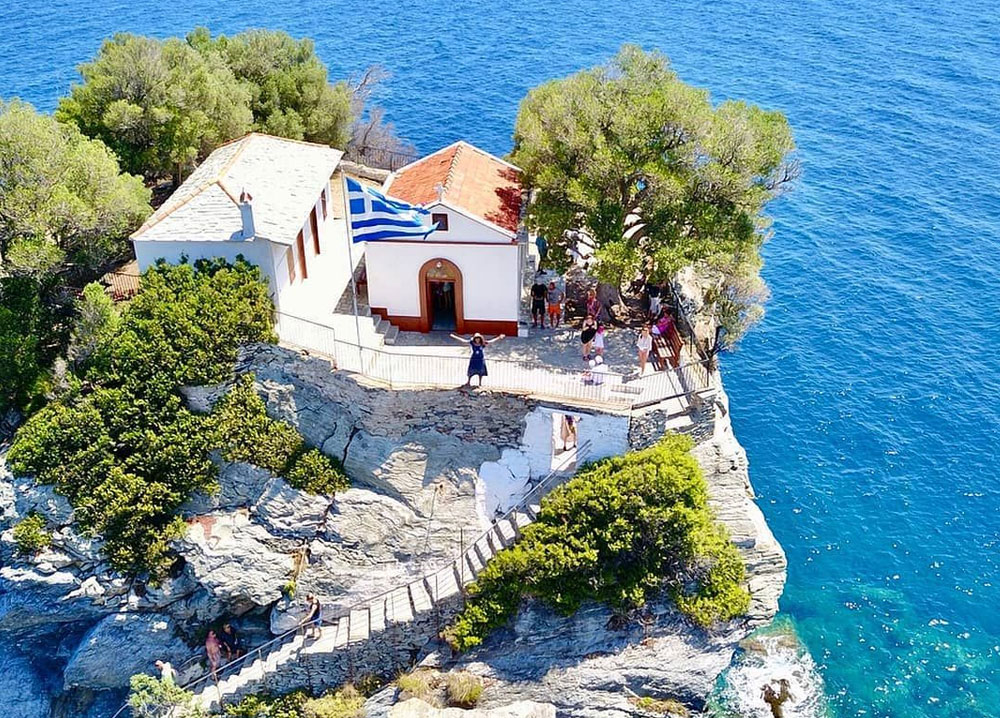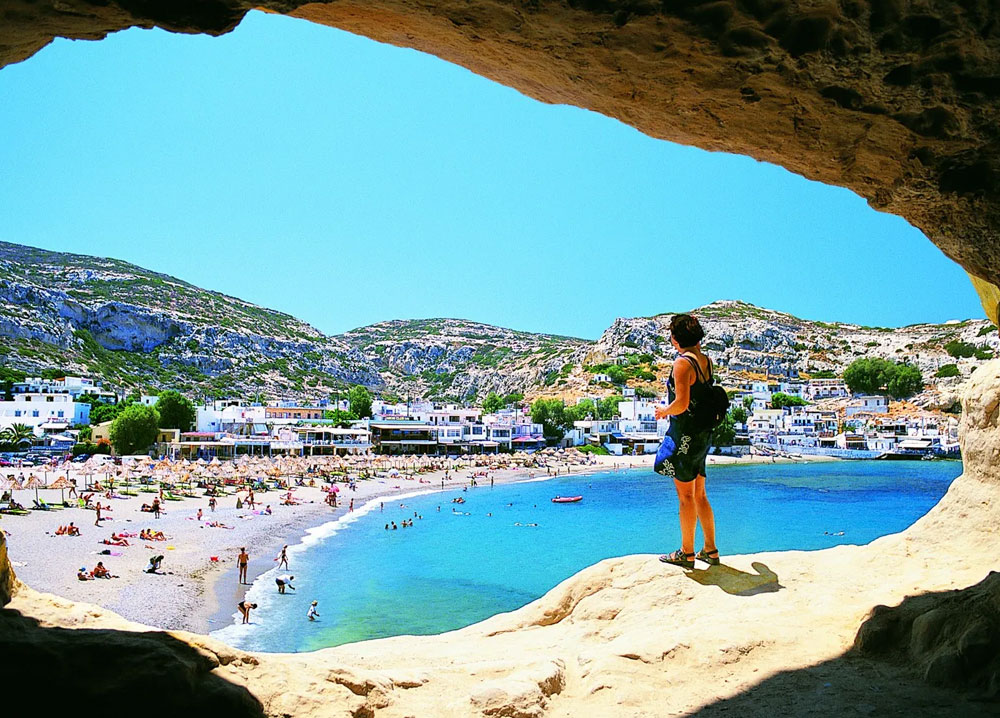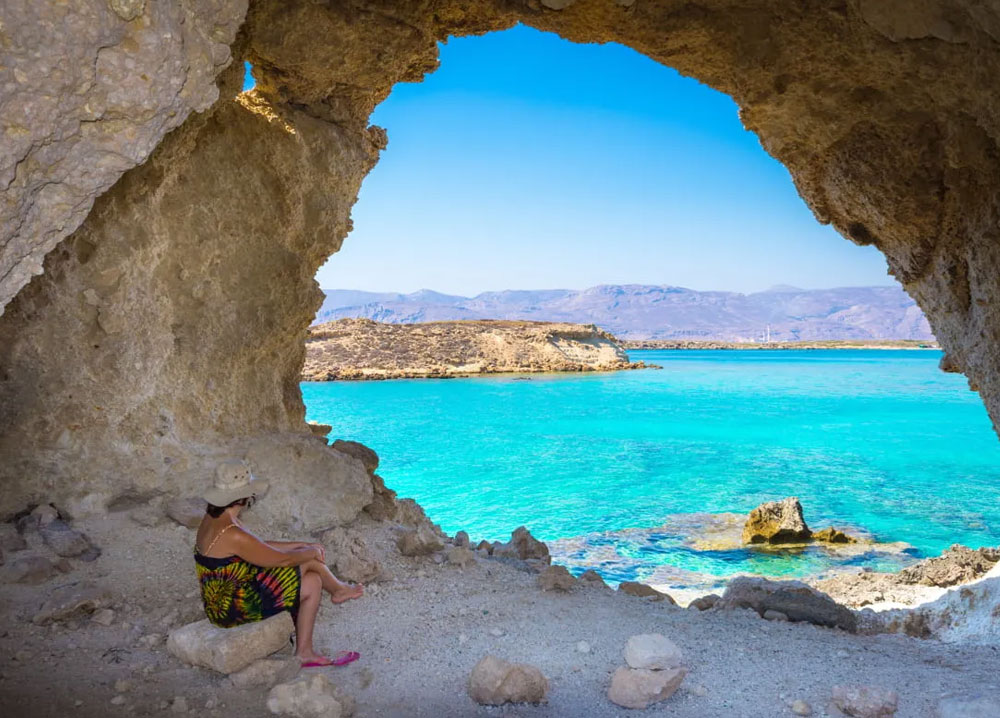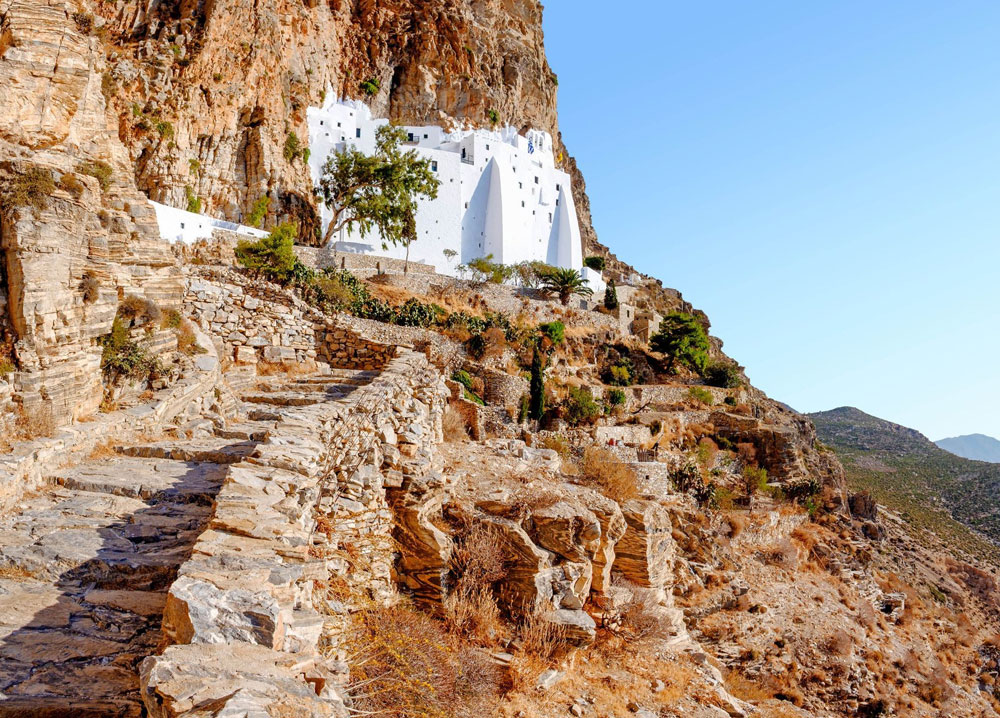Exploring Greek Islands Post Covid-19

Regardless of exact numbers, there are certainly enough for anyone to spend a lifetime exploring them all.
And we’ve been feeling very eager to go back and explore this marvelous archipelago. The “bug” may have put our wanderlust on pause but whenever possible, we really look forward to jumping on a plane, next stop: Greek paradise.
We’ve put together a list of some of our travel bucket list islands which are welcoming visitors for some post-COVID-19 summer fun.

1. Skopelos, because Mamma Mia!
Several European media outlets praised Greece for managing to control the spread of Covid-19 with impressive success so far. The country adopted a comprehensive lockdown on March 23, much earlier than many of its European neighbors, having already shut down bars and restaurants a week before. The result is that the rates of infection and mortality in Greece remain remarkably low, while so far no case of COVID-19 has been recorded in Skopelos island.
And we really love this destination in Greece, partially because Mamma Mia the Movie included many romantic scenes in their story from Skopelos island.
Kastani Bay and beach, where “Does Your Mother Know” was performed, took place on Skopelos. There’s also Nisi Glisteri clifftop where ‘Our Last Summer’ was performed, and Agios Ioannis Prodromos Monastery, which is where the famous wedding scene was filmed.
If you run out of Mamma Mia! Scenes, you can always find a few smaller spots worth visiting, such as the old harbour, including Sam’s race with Harry and the clock tower where Sophia posts the invitations.
Despite an increase in popularity since the hit musical Mamma Mia was filmed here, over a decade ago, Skopelos has maintained its authenticity. Unspoilt island life; simple food; quiet beaches; green, mountainous interiors; offer a complete removal from the stresses of modern life.
Diving into their crystal clear waters and lazing under the sun are some of the best things to do during your Skopelos holidays.

2. Santorini, the Instagram-Worthy Island
Santorini looked like an abandoned place after the COVID-19 lockdown that was announced by the Greek government. While this put this gorgeous destination at financial strain, Santorini was still covonavirus free at the end of May. This is great news for those of us who cannot wait to go back to Oia Village.
In Ancient times, Santorini Island was known as Stongili, which means round in Greek. Strongili was the victim of an enormous volcano eruption in 1,500 BC. It’s believed by many researchers that this was also the cause of the destruction of the great Minoan civilization on the island of Crete.
It’s thought that one of the first people to reach the island were the Phoenicians in the 13th century BC, who gave it the name Kallisti, meaning the most beautiful, as they were mesmerized by its extraordinary beauty. We all are today!
In history, Santorini played different roles at different times from having little economical political interest to becoming a vibrant and closed society. Although Santorini was indeed a closed community for some time it was slightly influenced by the neighboring islands. As a result, Santorini adopted the Phoenician alphabet for written Greek and later the residents started to make contacts with other Greek regions.

3. Crete, the Zeus’ home
In Crete, a total of 17 people had mild symptoms, and no new COVID-19 cases have been registered on the island for several weeks. So, all hotels in Crete resumed regular operations from 1 July 2020. How exciting.
Currently, these strict measures are being gradually withdrawn: most shops and public institutions are now open again, subject to increased hygienic measures.
People are still attentive and practice social distancing. However, public life has become much more active. All state hospitals, private clinics and the university hospital in Heraklion are on heightened alert. The movement of goods is not limited, and food supplies are smooth.
In Crete, you’ll find some of the most significant attractions in Greece: see the famous archaeological sites, visit important monasteries and wander around the castles of the region erected by Venetians and Byzantines.
We absolutely love the mythology of this island. Accordingly, the first queen of Crete was Europa. Later on, Crete island became the land of King Minos. The legend goes that the king refused to sacrifice a bull to the gods and Poseidon punished him by making his wife fall in love with a bull. From this union the Minotaur was born and was hidden in a labyrinth.
Crete has been the epicenter of a number of significant events in the history of the world: home to the Minoan civilization, the initial Roman occupation of the island, the brave resistance during the World War II which completely threw German soldiers off guard and of course today it’s one of the most beautiful getaways for many of us.

4. Koufonisia, the Hidden Gem
Koufonisia hotels also resumed regular operations from 1 July 2020.
In the 80s and 90s, Koufonisia served as a secret hideaway for off-beat yet sophisticated Greeks and visitors whose knowledge exceeded the content featured in travel guides of the time.
Nowadays Koufonisia is regarded as the “Mykonos of the Cyclades”. The stream of visitors wearing expensive hippie-type attire who come spilling off the ferryboat in August may have discovered Koufonisia but it is a very different story during the months of June, July, and September, when it’s much quieter.
Cars are unnecessary on an island measuring 3.5 km from one end to another. All beaches on Koufonisia are easily accessed by foot and distances are short. The longest walking distance, from Hora to Pori, takes roughly 40 minutes to cover.

5. Amorgos, Untouched Beauty
In June, final COVID-19 testing was performed to ensure safety of the locals and visitors. As hotels started to resume regular operations from 1 July 2020, Amorgos started to come to life as well.
Amorgos has been inhabited since ancient times, though in some places, seems as if it hasn’t been since. Minoan tombs and towers dot the countryside, shipwrecks teeter on secluded beaches, and massive monasteries with few residents emerge from rock faces.
Don’t let all that untouched natural here beauty fool you. You’ll find whitewashed villages on the island that are the very picture of Greek island life.
It’s a short drive, but if you’re up for an hour-long hike once you are here, you’ll be richly rewarded with fresh spring water, the scent of thyme growing along the trail, and the view as you approach Chora that is said to look like a swallow’s nest set in the hillside.
In town, bright blue, red, and green shutters, intricate church bell cut-outs, and brilliant bougainvillea abound, while pebbly Anna Beach and the imposing Hozoviotissa Monastery are close by.
If you’d like more travel information, please don’t hesitate to contact our team on 1800 242 353.
